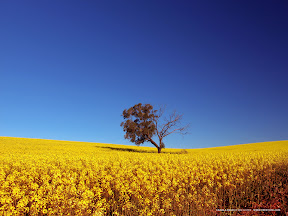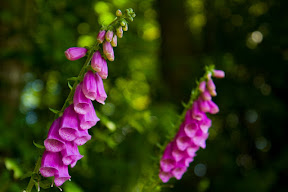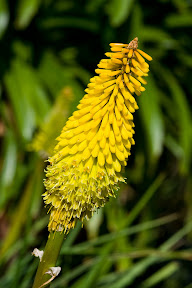Facts About the Country
Map
of Bangladesh
Flag:


Official Name:
People's Republic of Bangladesh
People's Republic of Bangladesh
Capital:
Dhaka
Dhaka
Ethnicity:
Bengali 98%; tribal groups and non-Bengali Muslims 2%
Bengali 98%; tribal groups and non-Bengali Muslims 2%
Population:
Approximately 140 million*
Approximately 140 million*
Population Growth Rate:
1.9%*
1.9%*
Life Expectancy:
63.5 years (male and female)*
63.5 years (male and female)*
Religions:
Muslim 88%; Hindu 11%; Christian, Buddhist, others 1%
Muslim 88%; Hindu 11%; Christian, Buddhist, others 1%
Official
Language:
Bengali
Bengali
Year of Independence:
1971 (from Pakistan)
1971 (from Pakistan)
Type of Government:
Parliamentary Democracy
Parliamentary Democracy
GNP Per Capita:
$440*
$440*
Annual Real Growth Rate of GDP:
6.3%*
6.3%*
GDP Composition by Sector:*
Agriculture - 21%
Industry - 27%
Services - 52%
Agriculture - 21%
Industry - 27%
Services - 52%
Adult
Literacy:
41%, Male - 52%, Female - 29%
41%, Male - 52%, Female - 29%
*World Bank
Development Indicators Database, April 2006
Bangladesh
Geography
Bangladesh
is a low-lying riverine country located in South Asia. It is the
second largest river basin in the world (behind the Amazon). The
country contains the confluence of the Ganges (Padma), Brahmaputra
(Jamuna), and Meghna Rivers and their tributaries which empty into the
Bay of Bengal. Bangladesh is bordered by India to the east, north, and
west and shares a short border with Myanmar (Burma) in the southeast.
The country is mainly flat, with 90% of its landmass less than 10
meters above sea level. With a population of approximately 150 million,
Bangladesh is the most densely populated agricultural country in the
world.
Government
After a bloody struggle for
liberation from Pakistan in 1971, Bangladesh was established as a
parliamentary democracy. The country was under military rule for many
years, but a democratically elected government was re-established in
1991. Parliamentary elections took place in 1996 and 2001, with a
peaceful transfer of power. The major political parties are the
Bangladesh Nationalist Party (BNP), the Awami League, the Jatiya Party
and the Jamaat-e-Islami Party. In late 2006 a caretaker government was
put in place to ensure stability for the duration of the national
election process. National elections are scheduled for December 2008.
Economy
Bangladesh has experienced steady
economic growth at a rate of approximately five percent annually during
the past decade. Manufacturing of ready-made garments provides
employment for over 2 million people, many of them women, and generates
nearly 75 percent of the export earnings of the country. The discovery
of substantial reserves of natural gas in Bangladesh could
significantly boost the country's economy and the people's well-being
if the reserves are managed carefully.
Agriculture
Bangladesh has made impressive gains in the production of
wheat and rice, the staple crop. It remains one of the few countries
with the potential to grow three rice crops a year. While the last
year has produced additional challenges, Bangladesh continues to work
to become essentially self-sufficient in rice production.
Non-Governmental Partners
International as well as indigenous
non-governmental organizations (NGOs) play a major role in delivering
social services and poverty reduction programs. The two largest and
best-known Bangladeshi NGOs are:
Current Conditions: Population & Health
Dramatic Improvements in Health
Twenty years ago, many experts claimed the nation's conservative culture and low standard of living would be insurmountable obstacles to family planning and child survival programs in Bangladesh. However, over the past three decades health indicators have improved dramatically.In Bangladesh contraceptive use among currently married couples increased from 8% in the mid 1970’s to 56% in 2007. This resulted in a significant decline in fertility from 6.3 to 2.7 children per woman over the same period. However, recent findings from the 2007 Bangladesh Demographic and Health Survey show that contraceptive use rate has not improved in the past 3 years. Bangladesh’s goal to reach a fertility level of 2 children per woman or below will require contraceptive use to increase substantially over the current use rate.
There has been a significant increase in use of antenatal care among pregnant women, from 49%in 2004 to 52% 2007.4. Despite the rise in antenatal care, only one in five women receive the recommended four or more antenatal visits during her pregnancy. Less than one in five deliveries are assisted by a trained birth attendant. has a consequence-35 women are dying each day in giving child birth.
Over the last three decades, mortality rates of children under the age of five have declined significantly. Their risk of dying has fallen from 250 to 65 deaths per 1000 live births. Similar sharp decline has occurred in infant deaths due to the success of a number of child health programs like increasing vaccination coverage and improving management and treatment of diarrhea and acute respiratory infections. Most deaths among children under five years of age, occurs now in the first month of life. Reducing neonatal mortality has become an emerging challenge for Bangladesh.
Recent Plateaus Require Vigilance
Bangladesh’s huge population size, extreme population density and high levels of poverty impose significant challenges to sustain the successes achieved in health. The recent plateau in contraceptive use, if it continues to persist, will be a major setback for limiting the country’s population growth and stabilizing its population size.Still, 85 percent of child deliveries occur at home, most with no trained birth attendants present. Only one in five women seek health check ups for herself or the baby within 6 weeks of delivery. The HIV/AIDS infection rate remains low in the general population. However, in certain high risk groups, the infection rate is rapidly reaching the threshold level. This could mean a full blown epidemic in the near future.
Current Conditions: Democracy & Governance
Bangladesh is a
relatively young parliamentary democracy and one of the most populous
Muslim-majority nations in the world. Bangladeshis have a strong sense
of national identity and, unlike many other emerging democracies, are
less vulnerable to divisions across ethnic, religious or regional
lines. The country has a history of citizen activism and a prolific
civil society. Elections, which have consistently resulted in power
transfers since 1991, tend to be ardently contested and highly
participatory. Bangladesh, however, had experienced major political
upheavals in the first 20 years of nationhood following its 1971
liberation war. It remains poor, vulnerable to natural disasters, and
susceptible to social upheaval and political conflict.
Bangladesh’s development as a democracy
has been interlaced with military rule and undermined by political
polarization, ineffective institutions of governance, and rampant
corruption. Partisan deadlock over electoral issues led to the
cancellation of the January 2007 parliamentary election and the
establishment of a military-backed caretaker government, which managed
the country under a state of emergency until December 2008. The
successful parliamentary election in December 2008 and the emergence of
Bangladesh’s 9th Parliament have brought about new opportunities for
democratic development and a new sense of urgency among Bangladeshi
stakeholders to reform political practices and institutions.
In part due to a series of reforms
initiated by the last caretaker administration and adopted by the
newly-elected government, Bangladesh has now entered a seminal period in
its democratic history and faces both the promise and challenge of
consolidating democratic reforms. New laws, for example, to prevent
terrorism and money laundering, protect rights to information, and
reform political and electoral processes will require commitment and
capacity to be reinforced. Similarly, key institutions, especially the
Parliament and the new commissions on human rights and corruption, need
to develop as credible bodies of democratic governance. The capacity
and effectiveness of local government in Bangladesh will also determine
the country’s progress as a democratic and prosperous nation.
TRAFFICKING IN BANGLADESH
Exact numbers on
trafficking in Bangladesh are unavailable. However, estimates on the
number of women and children trafficked range from 10,000 to 20,000 per
year. Estimates cannot easily be tested because of the clandestine
nature of trafficking. Trafficking occurs both within Bangladesh and
across its borders to India, Pakistan, and Middle Eastern countries,
primarily the United Arab Emirates and Kuwait. From Bangladesh, most
women and children are trafficked for commercial sexual exploitation,
domestic work and forced labor.
Current Conditions: Energy
Energy is an Engine of Growth
For Bangladesh,
stable, expanding energy resources are a prerequisite for economic
development. Bangladesh's energy resources constitute a significant
engine of growth. More than two million people are employed in rural
areas through electricity-run irrigation pumps, equipment and
businesses. Rural businesses with electricity can generate eleven times
more jobs than those without electricity.
Large Unsatisfied Demand for Energy
Bangladesh has a large unsatisfied
demand for energy, which is growing by 10 percent annually. Currently,
it has the lowest per capita consumption of commercial energy in South
Asia. While the current installed capacity is 5320 megawatts because of
reduced efficiency of the old generating units the derated (effective)
capacity stands at 4830 megawatts as of November 2008. As a result,
the country has been unable to meet the growing demand for electricity.
All parts of the country, including the capital, Dhaka, experience
frequent planned electricity outages.
To
respond to the growing demand for energy, the Government of Bangladesh
has permitted private, independent power producers to enter the
Bangladeshi market since 1996. While the maximum generation currently
is approximately 3,800 megawatts, demand during peak hours reaches
5,000 megawatts. U.S. assistance in this program area helps Bangladesh
move from a developing country to a transforming country by
establishing a transparent energy regulatory climate that will
facilitate infrastructure investment, simultaneously promoting economic
growth and good governance. USAID anticipates that by 2012 increased
investment in infrastructure will allow Bangladesh to provide 6,400
megawatts of electricity during peak demand and an additional 1.8
million consumers will have access to off-grid power from solar energyBangladesh Has Rich
But Dwindling Biodiversity
Bangladesh is situated at the unique juxtaposition of the composite, sprawling, interlinked Ganges-Brahmaputra-Meghna (GMB) river systems, the second largest river system in the world, which drains an area of 1,086,000 square kilometers from China, Nepal, India and Bangladesh. Because of this unique geophysical location, the country has been endowed with rich biological diversity, hosting a rich variety of species superbly evolved to populate the ecosystems of the country. However, due to the various pressures of a growing population (with an already existing base of 145 million people), development interventions, gaps in policy and legislation, and conflicting institutional mandates, 95% of Bangladesh’s natural forests and 50% of its freshwater wetlands are lost or degraded. Bangladesh now has among the smallest areas of protected and intact forest in the world, consisting of 1.4% of its landmass. Many terrestrial wildlife species have been lost during the last 100 years. In addition, the World Conservation Union (IUCN) in 2000 classified 40% of Bangladesh’s freshwater fish species as threatened with national extinction.
Bangladesh - the Most Vulnerable Country to Global
Climate Change

Bangladesh is
the most vulnerable country to climate change impact. Being the
largest delta in the world located at the downstream of the second
largest river system, the country is subject to a series of climatic
events. The probable impacts of global climate change (GCC),
particularly sea-level rise and the associated impact on ecosystems and
economic loss, adds to the already daunting array of environmental
issues. Climate change will change the physiography and demography of
Bangladesh. By 2050, 70 million people could be affected annually by
floods; 8 million by drought; up to 8% of the low-lying lands may
become permanently inundated. In addition to direct inundation of a
large population, the sea level rise will certainly result in increased
frequency and severity of flooding along the major estuarine rivers.
Saltwater intrusion problems will also be exacerbated in coastal
aquifers. Some impacts manifesting in erratic weather patterns and
unexpected extreme climatic events have already been evident. The most
recent cyclone, Cyclone Sidr, hit Bangladesh on November 15, 2007 with
an enormous intensity. Winds of 220-240 km/hr and the cyclone’s width
of 600 kilometers caused over 3,000 deaths and projected costs of $2.3
billion dollars due to widespread devastation to houses,
infrastructure, and livelihoods. Climate change will change the
physiography and demography of Bangladesh. By 2050, 70 million people
could be affected annually by floods; 8 million by drought; up to 8% of
the low-lying lands may become permanently inundated. Climate Change
is no longer only an environmental issue; it is a development issue.
Bangladesh has prepared through a participatory process the “Bangladesh
Climate Change Strategy and Action Plan” (BCCSAP). About US$500
million will be needed immediately, and about $5 billion will be needed
within the next 5-10 years. The government has earmarked US$ 45
million. The donors are in the process of setting up a US$ 150 million
Multi Donor Trust Fund (MDTF).
In Bangladesh, Poverty and Natural Resource Dependence are
Strongly Linked
 Seventy-percent of Bangladeshis depends on natural resources
(wetlands and forests) for their livelihoods. Poverty is mainly rural
(53% rural headcount poverty, 37% urban). Seventy-seven percent of
rural households say they are at break-even or deficit status. Within
this bracket, 18% comprise the hardcore poor who are always in deficit.
The rural poor are traditionally the most natural resource dependent
and landless communities whose lives are totally dependent on natural
capital.
Seventy-percent of Bangladeshis depends on natural resources
(wetlands and forests) for their livelihoods. Poverty is mainly rural
(53% rural headcount poverty, 37% urban). Seventy-seven percent of
rural households say they are at break-even or deficit status. Within
this bracket, 18% comprise the hardcore poor who are always in deficit.
The rural poor are traditionally the most natural resource dependent
and landless communities whose lives are totally dependent on natural
capital.
Degradation of natural
capital and biodiversity has a serious and direct impact on the food
security, nutrition and income of the poor. The people of Bangladesh
have a historical dependency on the floodplain system for their
livelihood security. An estimated 70 million rural households rely on
food and income from the wetlands to survive in one of the world’s
poorest countries. Around one million people are estimated to fish
full time, and 11 million are involved part time – and four out of
every five rural dwellers are dependent to some extent on aquatic
resources. These resources are estimated to supply between 60% and 80%
of the animal protein needs of the country, as well as being a key
source of essential minerals, vitamins and fatty acids which are vital
factors in child development and adult health. Between 1995 and 2000,
freshwater fish consumption fell by 38% among poor wetlands
inhabitants. Open water fish that used to supply 80% of the animal
protein consumed, in particular by the rural poor, now supply less than
60%. Sustainable management of the bio-diverse natural capital is,
therefore, central to poverty reduction in the Bangladesh context.
Current Conditions: Food Security
Although
food grain is more available in good harvest years, Bangladesh as a
whole still has a very low level of nutrition. This means many
households and individuals do not eat a balanced, nutritious diet, even
in good years. According to the World Bank, approximately 33 million
of the 150 million people in Bangladesh cannot afford an average daily
intake of more than 1800 kilocalories (the minimum standard for
nutrition as set by the World Food Program). For people in most
developing countries, the daily calorie average is 2,828. In
Bangladesh, that average is only 2,190.
Poverty is the major factor effecting food security in
Bangladesh. Despite the impressive increases in food grain, around
half of Bangladeshis remain below the established food based poverty
line. And, as many as one third are living in extreme poverty and
severely undernourished. Recent food price increases, regular natural
disasters, and strains on the global economic market have caused
additional destabilization.
Limited Food for the Very Poor
The very poor in Bangladesh simply do not have
enough money for food, much less enough to eat nutritiously. 49% of
Bangladeshis fall below the poverty line and 42% of the total
population survives on less than a dollar a day. Bangladesh is a
disaster prone area subject to flooding, mud slides, and cyclones. As
much as 50% of the population lives in these disaster prone areas, which
further complicates their already vulnerable situation. During
natural disasters, families often lose what few possessions they may
1
UNDP Human Development Report 2005.
2UN Millenium Development Goals Indicators 2004
(updated June 2006)3"Education Watch 2004 -
Quality with Equity: The Primary
Education Agenda in Bangladesh".
Campaign for Popular Education
(CAMPE).
Current Conditions: Education
Education
is a High Priority
Education is fundamental to the development of Bangladesh. The Government has placed a high priority on it, particularly at the primary school level. Although official education statistics are unreliable, substantial progress has been made over the last 20 years. Enrollments have increased, the gender balance has improved, and public spending on education has expanded.
Education is fundamental to the development of Bangladesh. The Government has placed a high priority on it, particularly at the primary school level. Although official education statistics are unreliable, substantial progress has been made over the last 20 years. Enrollments have increased, the gender balance has improved, and public spending on education has expanded.
Daunting Challenges for a Growing Population
While the Government has
increased funding for education, the expenditure per pupil remains
very low. Teachers are poorly trained and paid. In many cases, they
are not working up to their capabilities, nor to government-set
standards. Teaching methods and materials are generally sub-standard,
especially in government schools. Schools are in poor condition and
detrimental to learning.
System in Need of Reform
The education system is badly in need of reform. The autocratic, centralized and top down approach that persists stifles innovation. Corruption in the system and cheating on exams by teachers under pressure from officials and parents are widespread. Officially available grade and competency levels are probably inflated. At the local level, community and official support for schools is very poor. Only 15% of school management committees are active, and less than 50% of primary schools have parent-teacher associations.
The education system is badly in need of reform. The autocratic, centralized and top down approach that persists stifles innovation. Corruption in the system and cheating on exams by teachers under pressure from officials and parents are widespread. Officially available grade and competency levels are probably inflated. At the local level, community and official support for schools is very poor. Only 15% of school management committees are active, and less than 50% of primary schools have parent-teacher associations.
Early
Childhood Education Receives Little Attention
Parents and communities do not prepare children well for school, and preschools have not yet caught on. Informal "baby classes" have been created at many government schools as a response to younger siblings following older siblings to school. However, lack of equipment and a curriculum make them inappropriate early learning environments.
Parents and communities do not prepare children well for school, and preschools have not yet caught on. Informal "baby classes" have been created at many government schools as a response to younger siblings following older siblings to school. However, lack of equipment and a curriculum make them inappropriate early learning environments.
There are
an estimated 9 million children aged 3-6 in Bangladesh. Although the
most recent Government plans include preschool classes in 80% of
government schools by 2015, early childhood development has received
little attention. Due to severe budget and capacity constraints, it
is not currently a government priority. For that reason, it is also
not a donor priority, with a few exceptions. Most existing early
childhood programs are provided through NGOs working with communities.
Despite commendable efforts by the NGO community, the coverage of
existing early childhood programs remains limited. While the quality
varies, most observers feel there is substantial room for
improvement.
In sum, far
from making inroads on the country's educational deficit, the current
education system continues to add to it, year after year.
History
What is now called Bangladesh is part of the historic region of Bengal, the northeast portion of the Indian subcontinent. Bangladesh consists primarily of East Bengal (West Bengal is part of India and its people are primarily Hindu) plus the Sylhet district of the Indian state of Assam.The earliest reference to the region was to a kingdom called Vanga, or Banga (c. 1000 B.C. ). Buddhists ruled for centuries, but by the 10th century Bengal was primarily Hindu. In 1576, Bengal became part of the Mogul Empire, and the majority of East Bengalis converted to Islam. Bengal was ruled by British India from 1757 until Britain withdrew in 1947, and Pakistan was founded out of the two predominantly Muslim regions of the Indian subcontinent. For almost 25 years after independence from Britain, its history was part of Pakistan's
West Pakistan and East Pakistan were united by religion (Islam), but their peoples were separated by culture, physical features, and 1,000 miles of Indian territor.
The Formation of an Independent Bangladesh
Tension between East and West Pakistan existed from the outset because of their vast geographic, economic, and cultural differences. East Pakistan's Awami League, a political party founded by the Bengali nationalist Sheik Mujibur Rahman in 1949, sought independence from West Pakistan. Although 56% of the population resided in East Pakistan, the West held the lion's share of political and economic power. In 1970, East Pakistanis secured a majority of the seats in the national assembly. President Yahya Khan postponed the opening of the national assembly in an attempt to circumvent East Pakistan's demand for greater autonomy. As a consequence, East Pakistan seceded and the independent state of Bangladesh, or Bengali nation, was proclaimed on March 26, 1971. Civil war broke out, and with the help of Indian troops in the last few weeks of the war, East Pakistan defeated West Pakistan on Dec. 16, 1971. An estimated one million Bengalis were killed in the fighting or later slaughtered. Ten million more took refuge in India. In Feb. 1974, Pakistan agreed to recognize the independent state of Bangladesh.Founding president Sheikh Mujibur was assassinated in 1975, as was the next president, Zia ur-Rahman. On March 24, 1982, Gen. Hossain Mohammad Ershad, army chief of staff, took control in a bloodless coup but was forced to resign on Dec. 6, 1990, amid violent protests and numerous allegations of corruption. A succession of prime ministers governed in the 1990s, including Khaleda Zia, wife of the assassinated president Zia ur-Rahman, and Sheikh Hasina Wazed, the daughter of Sheik Mujibur.
Prime Minister Sheikh Hasina completed her five-year term as prime minister in July 2000—the first leader to do so since the country gained independence from Pakistan in 1974. In Oct. 2001 elections, Khaleda Zia again won the prime ministership.
nvestigations into Governmental Corruption Begin
Violence erupted in Oct. 2006, when Zia's term ended and President Ahmed took over as the head of a caretaker administration. An alliance of parties, headed by the Awami League, said it would boycott the Jan. 2007 elections, alleging corruption in the electoral commission. The violence intensified in Jan. 2007, prompting President Ahmed to declare a state of emergency and postpone the elections. Fakhruddin Ahmed became the interim head of the government. He swiftly opened a broad corruption investigation that resulted in the imprisonment of dozens of prominent officials, the seizure of luxury vehicles, and the freezing of bank accounts. In March, Tarique Rahman, the son of former Prime Minister Khaleda Zia, was arrested in the investigation and charged with extortion. Khaleda Zia herself was arrested and charged with corruption in September. In addition, Sheikh Hasina was arrested and charged with corruption and organizing the murder of four supporters of a rival party.Mudslides set off by heavy monsoon rains killed at least 100 people in June 2007 in Chittagong, a port in the southern part of the country. In November, Cyclone Sidr, with winds over 100 miles per hour, killed nearly 3,500 people in southern Bangladesh. The United Nations reported that a million people were left homeless.
Bangladesh went ahead with its general election in December 2008. It was the first general election since the army-backed caretaker government took power in January 2007. The Awami League, headed by Sheikh Hasina, won in a landslide, taking 262 of 299 seats in Parliament. The vote was considered fair and largely free of scandal. Sheikh Hasina was sworn in as prime minister in January 2009.





























